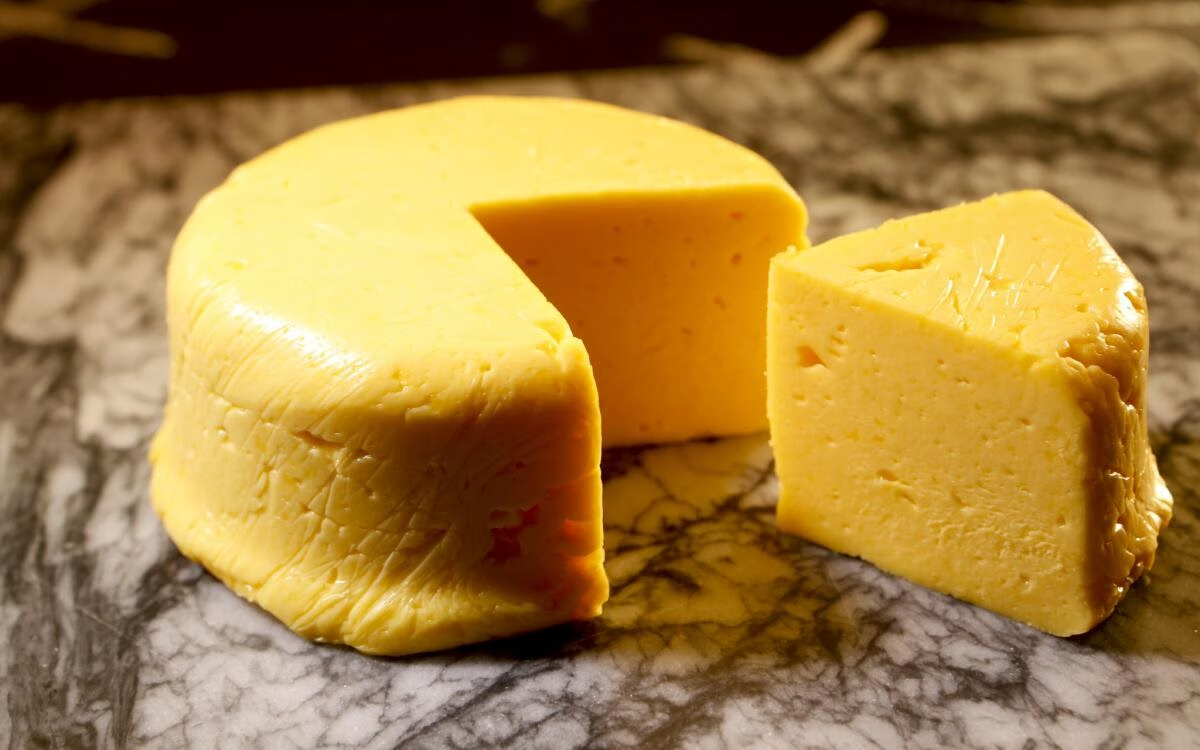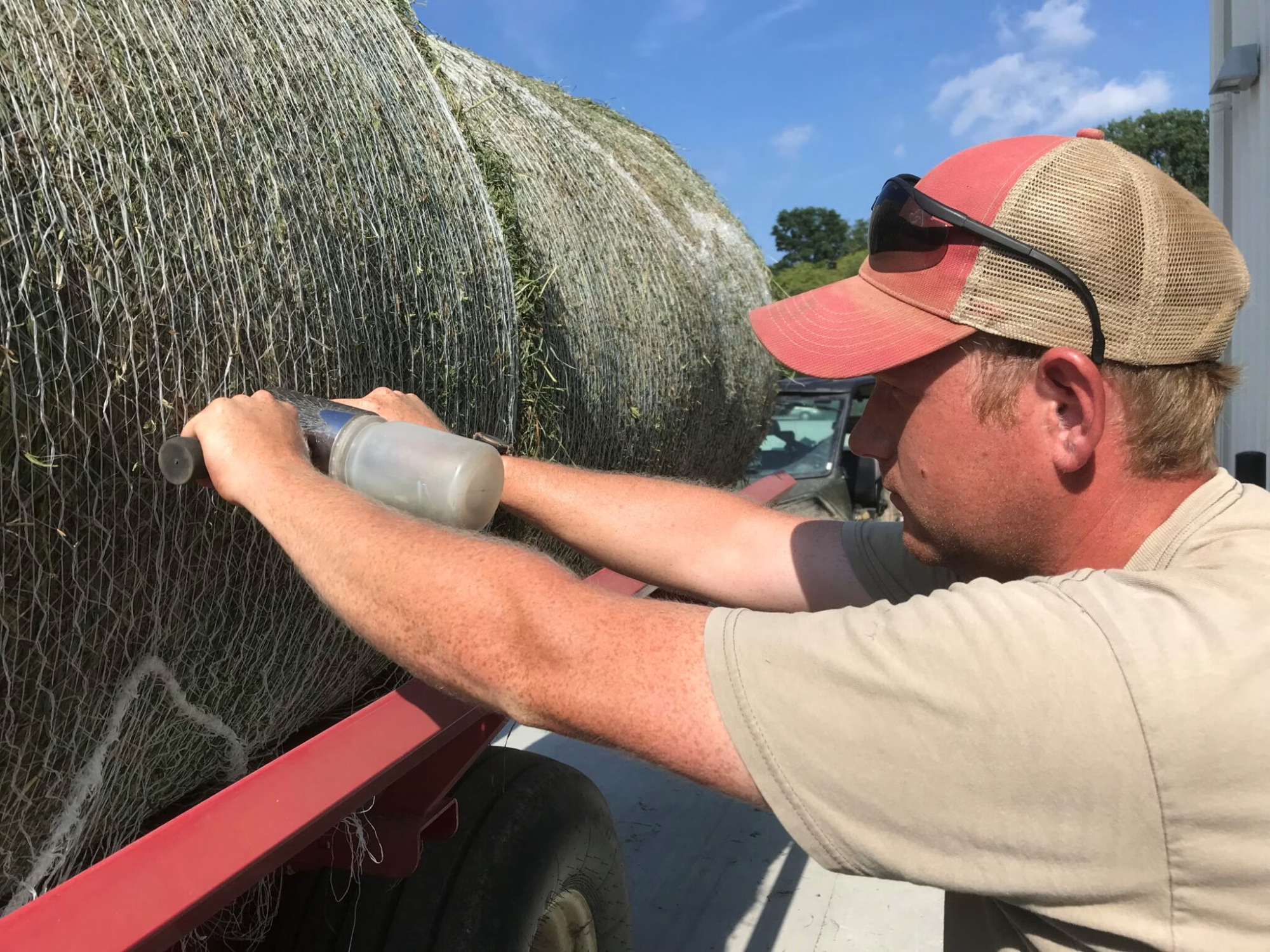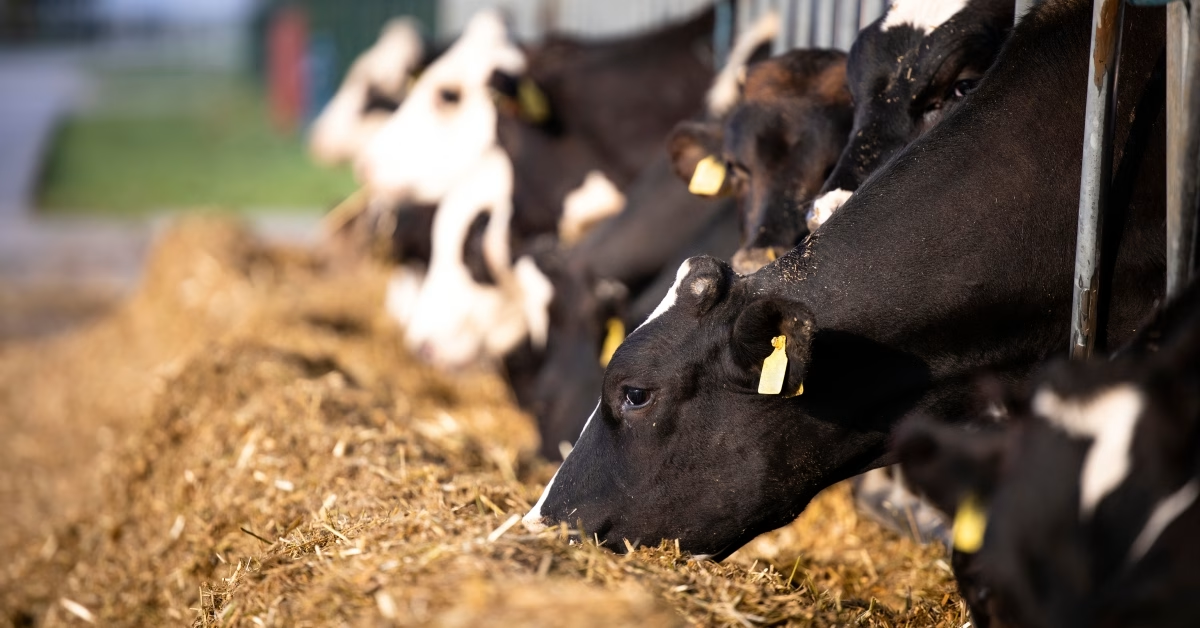Find out how rising dairy prices affect your farm and what you can do to stay ahead. Are you ready for the market changes? Read more now.
Summary: The dairy market is experiencing a whirlwind of changes this summer, with significant fluctuations in butter, cheese, and milk production across the United States. Tight spot cream supplies in the East and Central regions contrast with steady churning in the West, while cheese production faces regional disparities due to varying milk availability. Fluid milk volumes are dipping across much of the country, influenced by high temperatures, although the Pacific Northwest remains an exception. As milk production forecasts for 2024 and 2025 are lowered, dairy farmers are navigating a complex landscape marked by supply limitations and shifting demands. International dynamics further add to the complexity, with changing production patterns in Europe, Australia, and South America influencing global dairy prices. Dairy costs have reached record levels, affecting farmers and producers. Factors driving these prices include fluctuations in milk output and increased demand in global markets. Butter prices have remained stable, while cheese prices have varied. Nonfat dry milk has decreased slightly, but dry whey has maintained a mixed trend. Grade AA butter closed around $3.1800 in mid-August, with a weekly average approaching $3.1410. Declining cream supplies in the East and Central areas have made churning rare, while the West remains active. Cheese demand is constantly in flux, with milk supplies tightening as schools stock up. Retail cheese demand is increasing, providing vitality to the market. Grade A NDM and dried whey have remained slightly lower than the weekly average, leading to constrained supply and surging demand. The Pacific Northwest has moderate temperatures, while dry dairy products are making waves due to their complex supply and demand dynamics. International markets significantly impact U.S. dairy pricing, with hot weather worsening the seasonal decline in milk output in Europe.
- Tight spot cream supplies in the East and Central regions, with steady churning in the West.
- Cheese production faces regional disparities due to varying milk availability.
- Fluid milk volumes are dipping across much of the U.S., except in the Pacific Northwest, influenced by high temperatures.
- Milk production forecasts for 2024 and 2025 have been lowered, impacting dairy farmers.
- International dynamics, including production patterns in Europe, Australia, and South America, influence global dairy prices.
- Dairy costs have reached record levels due to fluctuations in milk output and global demand.
- Butter prices remain stable, while cheese prices show regional variations.
- Nonfat dry milk prices have slightly decreased, and dry whey prices show mixed trends.
- Increasing retail cheese demand suggests a strengthening market.
- Moderate temperatures in the Pacific Northwest are aiding milk production stability.
- International hot weather conditions are worsening the seasonal decline in milk output in Europe.

Have you ever wondered why your grocery store’s dairy section has become more expensive recently? It’s not just inflation; dairy costs are skyrocketing at record levels. These fluctuating market movements may have a significant impact on farmers. Staying educated is more than just a good idea; it’s essential for managing this ever-changing world. Understanding the mechanics behind these pricing changes might make the difference between prospering and barely scraping by. Several reasons are driving these growing prices, including fluctuations in milk output and increased demand in worldwide markets. Butter prices have remained stable over the previous week, whereas cheese prices have varied. Nonfat dry milk has decreased somewhat, although dry whey has maintained a mixed trend. These little adjustments have a significant effect on dairy producers like you. By the end, you’ll better understand why keeping ahead of market trends is not just advantageous, but necessary for proactive decision-making.
| Product | Latest Closing Price | Weekly Average Price | Price Change (+/-) |
|---|---|---|---|
| Butter (Grade AA) | $3.1800 | $3.1410 | +0.0400 |
| Cheese (Barrels) | $2.2550 | $2.1840 | +0.2370 |
| Cheese (40# Blocks) | $2.1000 | $2.0495 | +0.1275 |
| Nonfat Dry Milk (Grade A) | $1.2550 | $1.2380 | -0.0155 |
| Dry Whey (Extra Grade) | $0.5500 | $0.5590 | -0.0275 |
Wondering How the Dairy Market is Faring This Summer? Let’s Break It Down.
How was the dairy market doing this summer? Let us break it down. First, let’s discuss butter. As of mid-August, Grade AA butter closed around $3.1800, with a weekly average approaching $3.1410. “Why the uptick?” you may wonder. Declining cream supplies in the East and Central areas have made churning rare, while the West remains active.
Cheese is now the subject of an ongoing drama. Barrel cheese closed at $2.2550, while 40-pound chunks sold for $2.1000. Weekly averages rose significantly, with barrels at $2.1840 and blocks at $2.0495. Cheese demand is constantly in flux: milk supplies are tightening, mainly as schools stock up, making Class I requirements a top priority. But guess what? Retail cheese demand is increasing, providing vitality to the market.
What about nonfat dry milk (NDM) and dried whey? Grade A NDM finished at $1.2550, slightly lower than the weekly average of $1.2380. Dry whey concluded at $0.5500, with the weekly average dropping to $0.5590. The story here is one of scarcity—whether condensed skim or whey, everyone feels the squeeze.
The primary result is that constrained supply and surging demand are paving the way for a volatile market. As a dairy producer, it’s crucial to monitor these market trends and navigate these developments. This vigilance will help you understand the market’s future direction and make informed decisions. Will these tendencies remain consistent? Only time will tell, but your proactive monitoring will keep you ahead of the curve.
What’s Going On with the Butter Market? Spoiler: It’s Quite the Roller Coaster!
Are you aware that the butter market is seeing exciting changes this summer? Let’s get into it. Butter production has reached a seasonal low, which is unsurprising given the time of year. Limited spot cream supplies have hampered churning schedules in the East and Central areas. However, the West has a different narrative. Despite the seasonal fall, butter output in this area remains steady. This geographical disparity represents a fragmented market in which location influences manufacturing tendencies.
As the autumn season approaches, butter demand is expected to rise. Customers begin to reserve their quantities to get ahead of the seasonal rush. It’s that time when everyone prepares for Christmas baking and festive feasts. Don’t remember that consumers purchase 3-5% more butter in the autumn than in summer [Bureau of Labor Statistics]. This increase in demand has a positive impact on butter prices in the latter half of the year. This anticipation of increased demand should make you feel prepared and ready to capitalize on the market.
What does this imply for pricing? The butter market is stable, but those positive factors could impact prices as the autumn season unfolds. This is especially important for dairy producers and dealers seeking to capitalize on market circumstances. In summary, although supply may be at a seasonal low, demand is increasing. This dynamic will substantially influence butter prices as the year ends.
Let’s Talk Cheese: What’s Driving This Market’s Steady Climb?
Let’s discuss cheese. Have you observed how the cheese market has recently been stable with a modest upward tendency? There are a few main variables influencing this. One of the most potent influences is milk supply. Cheesemakers suffer when milk quantities tighten, as they have recently, particularly in the East. Limited milk implies fewer raw materials for manufacturing, resulting in a rippling impact on supply and pricing.
But it isn’t just about the milk. Regional demand is also an important consideration. Food service demand has been consistent, but retail demand is where things become interesting. Consider this: with schools resuming, there is an increase in demand for cheese. Why? Educational institutions are large consumers of dairy products, and their buying activity increases when the academic year begins. This increase in demand strengthens the market and helps to keep cheese prices firm.
The limited spot milk supply in the central area is projected to keep prices above Class III until around Labor Day. Meanwhile, farmers in the West feel the strain but seem to have enough milk to keep the wheels going. Inventory levels vary per company, but the overall message is cautious optimism. As we approach the autumn season, combining milk supply and increased school demand may pave the way for the next phase of cheese market dynamics. The resilience and determination of farmers in the face of supply constraints should inspire and motivate you in your own operations.
What’s the Real Story Behind Fluid Milk Production This Summer? It’s a Tale of Regional Contrasts
What is the true story behind fluid milk production this summer? It’s a story of regional disparities caused by temperature fluctuations and varying seasonal needs. Dairies throughout the United States report lower milk output as the summer heat takes its toll. Temperatures in the highland and southern desert regions reach triple digits, putting cow comfort at risk and decreasing milk output.
However, the Pacific Northwest is a significant exception. Here, moderate temperatures—peaking in the 70s during the day and dropping to the 50s at night—have helped to keep milk quantities stable. This geographical heterogeneity is essential in influencing our overall fluid milk trends.
Seasonal changes play a significant role in the dairy market. With the back-to-school season approaching, there is an increased demand for Class I, notably fluid milk products. This demand prompts milk to migrate within areas to fulfill local demands, resulting in restricted supply and higher spot market prices. For example, spot milk prices reached $3.50 over Class, up $1.00 from the previous week. Understanding and anticipating these seasonal shifts can help you prepare and adapt your business strategies accordingly.
While some areas see a seasonal fall in milk production, others maintain their levels. This intricate interaction of environment and seasonal demand affects the fluid milk market, keeping dairy producers on their toes. As we look forward to the following months, we should evaluate how these regional and seasonal elements will continue to impact milk quantities and pricing, posing difficulties and possibilities for individuals in the dairy business.
Why Are Dry Dairy Products Making Waves in the Market? Let’s Get Into It.
As we concentrate on dry dairy products, the landscape for commodities such as nonfat dry milk, dry buttermilk, and dry whey shows a complex narrative of supply and demand dynamics influencing pricing and availability. Nonfat dry milk (NDM) costs, for example, have stabilized somewhat while rising in some places. This variation corresponds to the lower availability of condensed skim, which tends to fall with seasonal milk production. Less milk means less opportunity to create NDM, pushing prices upward.
Dry buttermilk is a mixed bag: inventories are available but not growing, indicating a balanced market without oversupply. The supply limitations are less severe than in NDM, but they are strong enough to prevent prices from decreasing. End users should expect pricing to be steady or higher, depending on their geographical market.
Then, we have dry whey, which highlights the market’s intricacies. Prices have fluctuated across areas, mainly due to the limited supply of selected labeled whey, keeping the market somewhat positive. The selective scarcity adds an element of uncertainty, causing companies that manufacture higher-protein concentrates to prefer whey protein concentrate markets.
Overall, it is evident that, although supplies of these dry items remain constant in certain circumstances, they are tightening in others. This equilibrium, or lack thereof, profoundly influences market circumstances and price structures. Supply chain coordination and strategic procurement planning become more critical as processors and end users negotiate these challenges.
Global Dairy Dynamics: How International Markets Shape U.S. Dairy Prices
International markets substantially impact U.S. dairy pricing since different areas confront distinct difficulties and possibilities. Hot weather has worsened the seasonal decline in milk output in Europe, notably in Western countries such as France, Germany, and the Netherlands, resulting in lower milk yields and reduced availability of dairy products. This has added uncertainty to the market, raising farm gate milk and cream prices and impacting global trade dynamics.
Meanwhile, in Eastern Europe, the picture is more upbeat. Countries such as Belarus are increasing milk output. According to USDA and CLAL statistics, Belarus witnessed a 3.7% rise in milk output in June 2024 compared to the prior year. This localized expansion helps to offset shortages elsewhere and contributes to the more excellent worldwide supply chain.
Oceania’s story is a mixed bag. Australia’s dairy exports have fallen 23.5 percent from the previous year owing to weather-related challenges and a tight feed market. Despite this, estimates for ordinary to above-average rainfall indicate some respite in the next season. In contrast, during recent trading events, New Zealand’s anticipated milk price for the 2024/2025 season has increased, partly due to a higher index price for whole milk powder. This surge is anticipated to keep global dairy prices up.
South American dairy farmers have benefited from neutral weather trends. Countries such as Brazil and Uruguay indicate good circumstances that should sustain continuous milk production. Cow comfort and pasture quality have been constant and favorable, ensuring a consistent supply of dairy products.
These worldwide dynamics influence supply and demand in the United States market. Reduced output in crucial regions such as Western Europe and Oceania may require more imports to meet local needs, thus raising costs. On the other hand, increased production in Eastern Europe and South America may help stabilize world supply, reducing dramatic price volatility. It’s a delicate balance that American dairy producers must strike, with worldwide trends constantly changing the landscape.
Have You Noticed More Dairy Ads Lately? You’re Not Imagining Things.
Have you seen an increase in dairy advertising recently? You are not imagining things. According to recent studies, retail advertising totals have increased significantly. Conventional ad numbers are up 5%, but organic ads have increased by 52%. That’s quite a bump! Traditional ice cream in 48-to-64-ounce containers has been the most marketed item, with typical cheese in six-to-eight-ounce pieces following closely after. Even in the organic section, half-gallon milk remains popular.
So, what does this imply for you, the dairy farmer? These retail trends are more than simply statistics; they reflect customer desire. When marketing for dairy products rises, it usually indicates high customer interest. And increased customer interest generally results in higher costs. For example, the Bureau of Labor Statistics reported a 2.2% increase in the July Consumer Price Index (CPI) for total food, while dairy goods showed mixed patterns, including a 1.3% increase in fresh whole milk and a significant 6.1% increase in butter.
Now, let’s connect the dots. As demand rises, farmers must plan for both possibilities and problems. Higher retail pricing often results in more significant profit margins for manufacturers. However, it is a double-edged sword; increasing demand for feed and other resources may result in higher production costs. Furthermore, the pressure to maintain high-quality output will increase as prices rise.
Be watchful and adaptive. Monitor consumer trends and store ads. They provide crucial information on the market’s direction. Altering your strategy proactively may help you capitalize on these developments, ensuring that your efforts pay off now and in the future.
Supply and Demand Shifts: How Will Lowered Milk Production Forecasts Impact You?
As we examine the most recent supply and demand projections for the dairy market, it is clear that the picture is changing dramatically. The World Agricultural Outlook Board’s (WAOB) August Supply and Demand Estimates show that milk production predictions for 2024 and 2025 have been reduced. This change is based on the most current statistics, which show a fall in cow inventories and reduced production per cow for both years.
How does this affect dairy farmers? Lower milk production predictions inevitably result in tighter supply. In dairy economics, tighter supply often puts upward pressure on pricing. The predicted decrease in milk production coincides with the expected price rise for different dairy products. The price estimates for cheese, nonfat dry milk (NDM), and whey have been increased in response to recent price gains. The all-milk price is expected to climb to $22.30 per cwt in 2024 and $22.75 per cwt in 2025.
Butter, however, offers a somewhat different narrative. Despite decreasing milk output, the butter price projection 2024 has been revised downward. This might be due to altering market dynamics or current inventory levels that are adequate to fulfill demand. However, the lower milk supply for other goods, such as cheese and whey, is expected to sustain further price hikes.
Despite decreasing output, robust local and international demand for dairy is predicted to stabilize prices. Dairy producers should optimize their processes to capitalize on increased pricing while controlling decreasing milk yield.
The Bottom Line
The dairy industry is active and diverse, with butter production balancing seasonal lows with anticipated demand and cheesemakers dealing with limited milk sources and unpredictable stocks. Temperatures impact regional variations in fluid milk production. In contrast, dry dairy product pricing varies due to restricted milk supply and altering seasonal demand. International market patterns influence U.S. pricing, emphasizing the need for monitoring and agility. Are you using all available data and insights to improve your operations and keep ahead of these changes?














